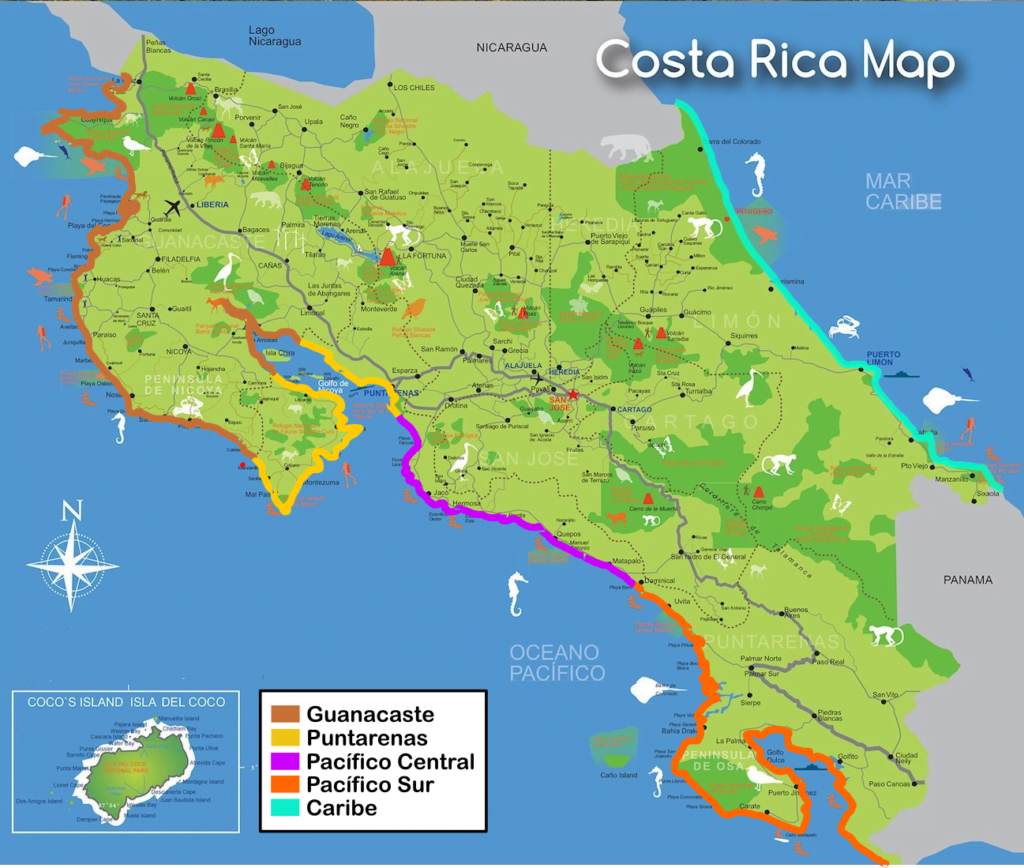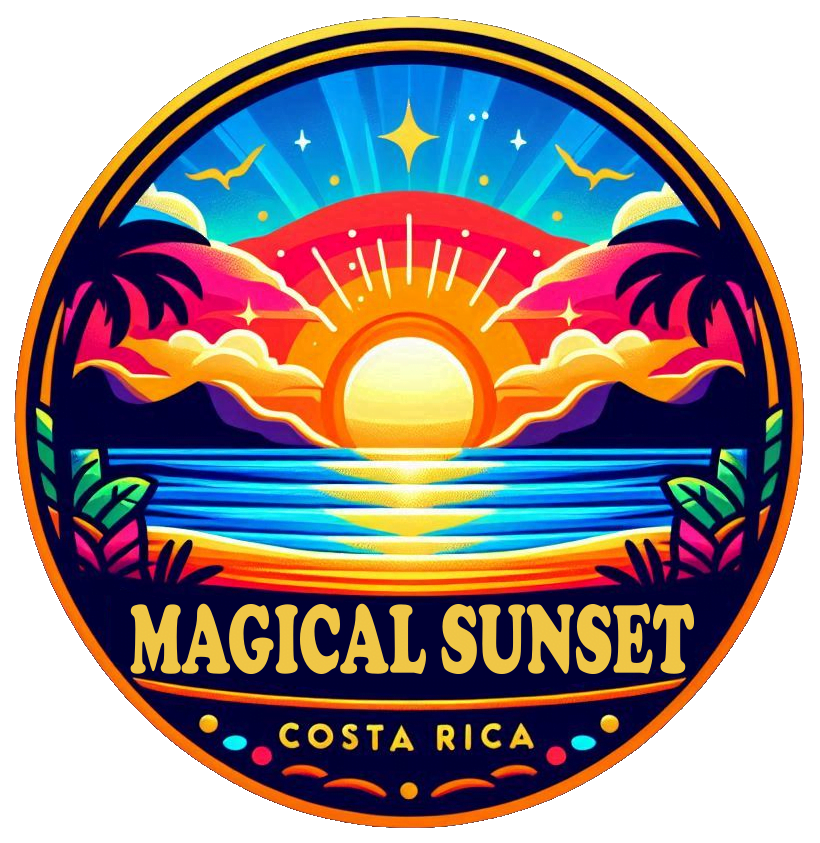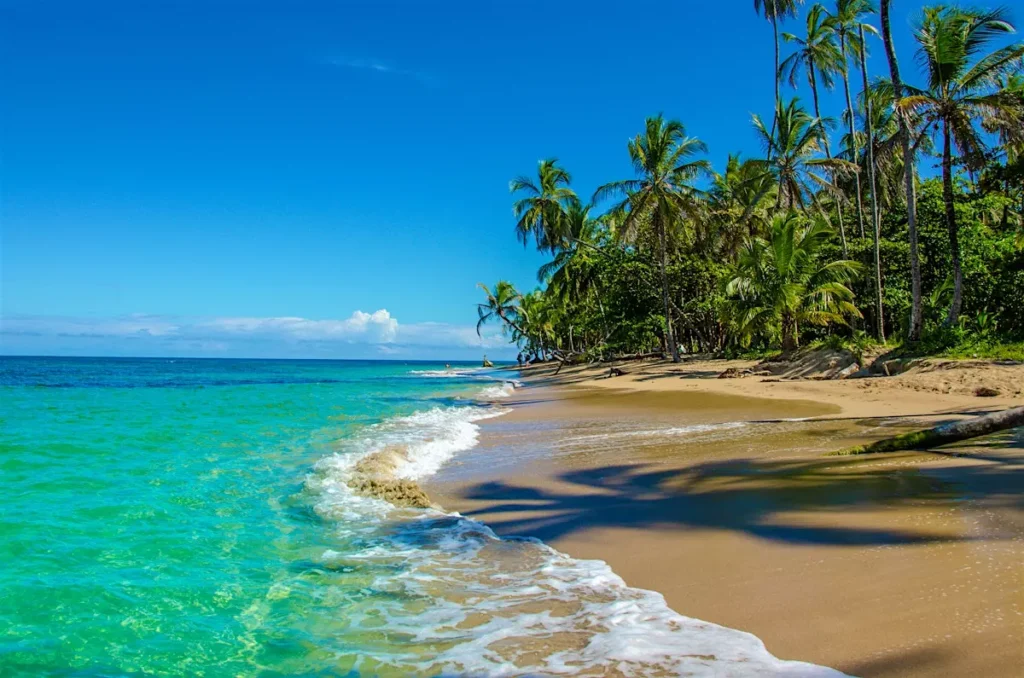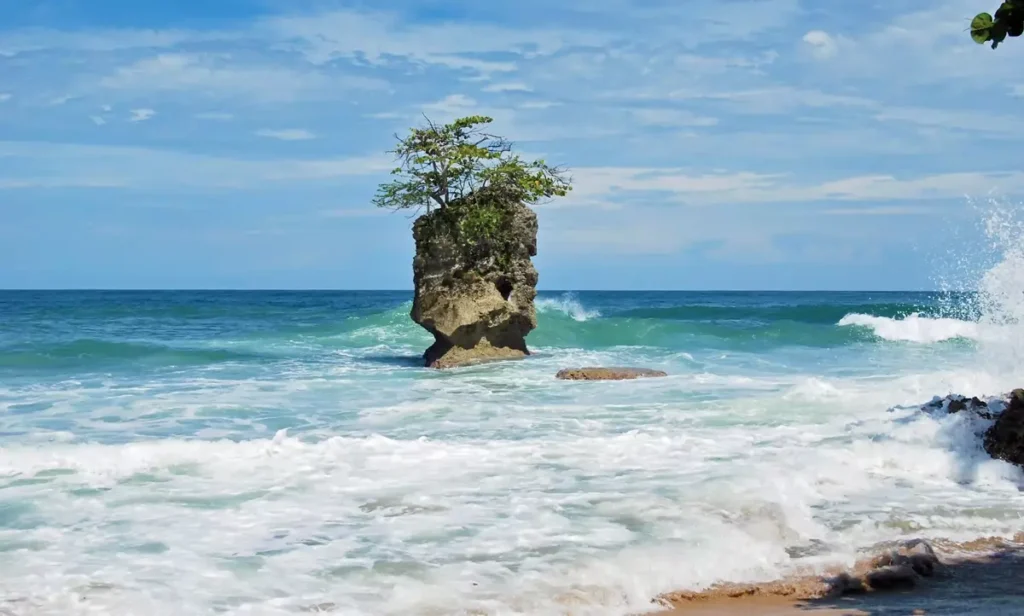Beaches in the Caribbean of Costa Rica
If you are looking for a paradise destination with dream beaches, crystal-clear waters, and lush biodiversity, the beaches in the Caribbean of Costa Rica are your ideal choice. With a unique blend of Afro-Caribbean, indigenous, and European cultures, this region offers you an unforgettable experience full of adventure and relaxation. From the calm waters of Playa Manzanillo to the vibrant coral reefs of Cahuita, the Costa Rican Caribbean is a destination you cannot miss.
Costa Rica’s Caribbean is located in the province of Limón, encompassing the cantons of Limón, Talamanca, Matina, Siquirres, and Guácimo. This region stretches from the border with Nicaragua to the border with Panama, along the eastern coast of the country.

Tabla de Contenido
- 1 Beaches in the Caribbean of Costa Rica
- 2 History and Interesting Facts About Costa Rica’s Caribbean
- 3 How to Get to the Caribbean Coast of Costa Rica
- 4 Tourist Services in the Caribbean
- 5 Activities and Attractions for Visitors in the Caribbean
- 6 Tips and Recommendations for Visiting Costa Rica’s Caribbean
- 7 Additional Information
- 8 Frequently Asked Questions About the Caribbean Coast of Costa Rica
Beaches in the Caribbean of Costa Rica
- Playa Negra
- Punta Mona Beach
- Chiquita Beach
- Gandoca Beach
- Punta Uva Beach
- Cahuita Beach
- Puerto Vargas Beach
- Puerto Viejo Beach
- Playa Blanca Cahuita
- Manzanillo beach
- Moín beach
History and Interesting Facts About Costa Rica’s Caribbean
Costa Rica’s Caribbean has a rich history shaped by the influence of various cultures. Originally inhabited by indigenous peoples, this region was colonized by the Spanish in the 16th century. During the 19th and 20th centuries, the arrival of Afro-Caribbean immigrants, primarily from Jamaica, shaped the cultural identity of the area. Today, the Caribbean of Costa Rica is famous for its calypso music, delicious Creole cuisine, and vibrant festivals.
How to Get to the Caribbean Coast of Costa Rica
Main Cities Near the Beaches:
- Limón: The main city in the region and the most important port on Costa Rica’s Caribbean coast.
- Puerto Viejo: A popular tourist destination known for its beaches and nightlife
Available Transportation:
- Buses: There are bus routes from San José to Limón and Puerto Viejo operated by companies like MEPE.
- Trains: Currently, there are no train services to the Caribbean coast.
- Taxis and Shuttles: Private transport services are available from San José and other major cities.
- Car Rentals: Several car rental companies operate in San José and Limón.
Access Routes:
- Roads: Route 32 connects San José to Limón. From Limón, you can take Route 36 south to reach Puerto Viejo and other beaches.
- Road Conditions: Route 32 is paved and in good condition, although it may experience closures due to landslides during the rainy season.
Route from San José to Limón:
Tourist Services in the Caribbean
Accommodations:
- Hotels and Resorts: From luxurious beachfront resorts to cozy boutique hotels.
- Hostels and Vacation Rentals: Affordable options for backpackers and families.
- Reviews and Reservations: Sites like TripAdvisor and Booking.com offer reviews and booking options.
Restaurants and Bars:
- Local Cuisine: Typical dishes like rice and beans, rondón, and patacones.
- Recommended Places: Maxi’s Restaurant in Manzanillo, Bread and Chocolate in Puerto Viejo.
Camping Areas:
- Designated Areas: Several national parks and nature reserves allow camping.
Parking and Facilities:
- Parking: Available at most beaches and parks.
- Additional Services: Public restrooms, showers, snorkel, and surf equipment rentals.
Activities and Attractions for Visitors in the Caribbean
Water Activities:
- Surfing: The waves at Puerto Viejo and Playa Cocles are ideal for surfing.
- Snorkeling and Diving: The coral reefs in Cahuita and Manzanillo offer incredible marine biodiversity.
- Fishing: Deep-sea fishing excursions available from Puerto Viejo.
Water Activities:
- Surfing: The waves at Puerto Viejo and Playa Cocles are ideal for surfing.
- Snorkeling and Diving: The coral reefs in Cahuita and Manzanillo offer incredible marine biodiversity.
- Fishing: Deep-sea fishing excursions available from Puerto Viejo.
Land Activities:
- Hiking: Trails in Cahuita National Park and the Kekoldi Indigenous Reserve.
- Cycling: Bicycle rentals in Puerto Viejo to explore the coast.
- Horseback Riding: Tours available at Playa Chiquita and Punta Uva.
Tours and Excursions:
- Guided Tours: Excursions to the Bribri and Kekoldi indigenous reserves.
- Nearby Points of Interest: The Gandoca-Manzanillo Wildlife Refuge.
Events and Festivals:
- Local Festivals: Limón Carnival in October, celebrating Día de la Raza.
Tips and Recommendations for Visiting Costa Rica’s Caribbean
Best Time to Visit:
- Climate: The dry season, from February to April and September to October, offers the best conditions
Precautions and Safety:
- Ocean Currents: Some beaches have strong currents; caution is advised.
- Dangerous Wildlife: Be mindful of jellyfish and sea urchins.
Local Tips:
- What to Bring: Sunscreen, insect repellent, snorkel gear.
What to Avoid: Do not leave valuables unattended on the beach.
Additional Information
Useful Links:
Contacts and Emergencies:
- Emergency: 911
- Limón Hospital: +506 2758-2222
The beaches of Costa Rica’s Caribbean are a destination that combines natural beauty, rich culture, and diverse activities for all tastes. Whether you are looking for adventure, relaxation, or a little of both, the Costa Rican Caribbean has something special for you. Don’t miss it!
Frequently Asked Questions About the Caribbean Coast of Costa Rica
What are the most popular beaches in Costa Rica’s Caribbean?
The most popular beaches in Costa Rica’s Caribbean include Playa Cocles, Playa Punta Uva, and Playa Manzanillo. These beaches are known for their golden sands, crystal-clear waters, and vibrant marine life. Each beach offers various activities such as snorkeling, surfing, and hiking.
When is the best time to visit Costa Rica’s Caribbean?
The most popular beaches in Costa Rica’s Caribbean include Playa Cocles, Playa Punta Uva, and Playa Manzanillo. These beaches are known for their golden sands, crystal-clear waters, and vibrant marine life. Each beach offers various activities such as snorkeling, surfing, and hiking.
What activities can be done in the Caribbean of Costa Rica?
In Costa Rica’s Caribbean, you can enjoy a variety of activities such as snorkeling, diving, surfing, hiking in national parks like Cahuita and Manzanillo, and wildlife tours in Tortuguero’s canals. These activities let visitors explore the region’s rich biodiversity and beautiful landscapes.
How accessible are the beaches in Costa Rica’s Caribbean?
Access to the beaches in Costa Rica’s Caribbean is generally good, with paved roads leading to most main beaches. However, some more remote areas may require 4×4 vehicles. Public and private transport options like buses and taxis are available from nearby cities.
What type of accommodation can be found in the Caribbean region?
In Costa Rica’s Caribbean region, you can find a wide range of accommodations, from boutique hotels and eco-lodges to hostels and vacation rentals. Many of these accommodations are located near the beach and offer additional services such as guided tours and water activities.
Is it safe to swim at the beaches in Costa Rica’s Caribbean?
Swimming at Costa Rica’s Caribbean beaches is generally safe, but it is essential to consider sea conditions and currents. Some beaches may have strong currents, so it is recommended to ask locals or lifeguards about conditions before entering the water.
What can you expect from the cuisine in Costa Rica’s 8Caribbean?
Cuisine in Costa Rica’s Caribbean is unique and influenced by Afro-Caribbean culture. Visitors can enjoy dishes like rice and beans cooked with coconut milk, patí (spicy empanada), and rondón (seafood soup). Local restaurants also offer a variety of fresh seafood and tropical fruits.
What are the main cultural attractions in Costa Rica’s Caribbean?
The main cultural attractions in Costa Rica’s Caribbean include the Limón Carnival, celebrating Afro-Caribbean culture with parades, music, and dancing, and the Ethnographic Museum in Puerto Limón, offering insights into the region’s history and culture. You can also visit indigenous communities like the Bribri and Cabécar.
What wildlife can be observed in Costa Rica’s Caribbean region?
Costa Rica’s Caribbean region is home to rich wildlife, including sea turtles, sloths, howler monkeys, jaguars, and various tropical birds. National parks like Tortuguero and Cahuita are excellent places for wildlife observation, especially during the turtle nesting season.
Are there public transportation options to get around Costa Rica’s Caribbean?
Yes, there are public transportation options in Costa Rica’s Caribbean, such as buses connecting major cities and towns. Taxis and private transport services are also available. For more remote destinations or greater convenience, renting a car is recommended.











